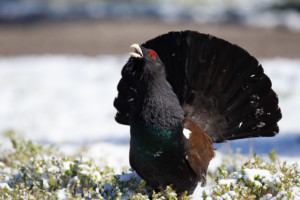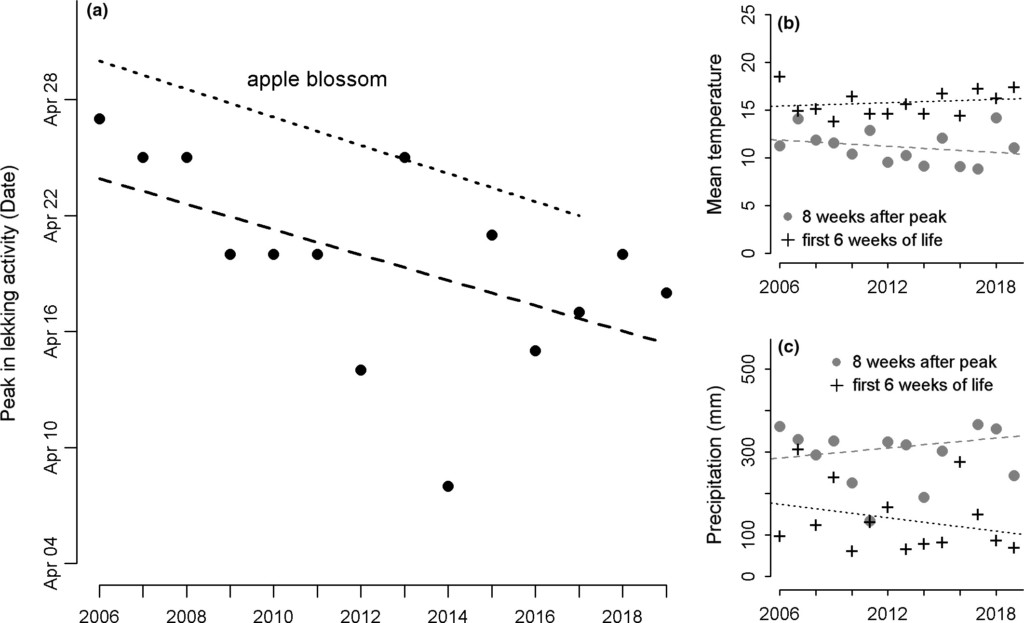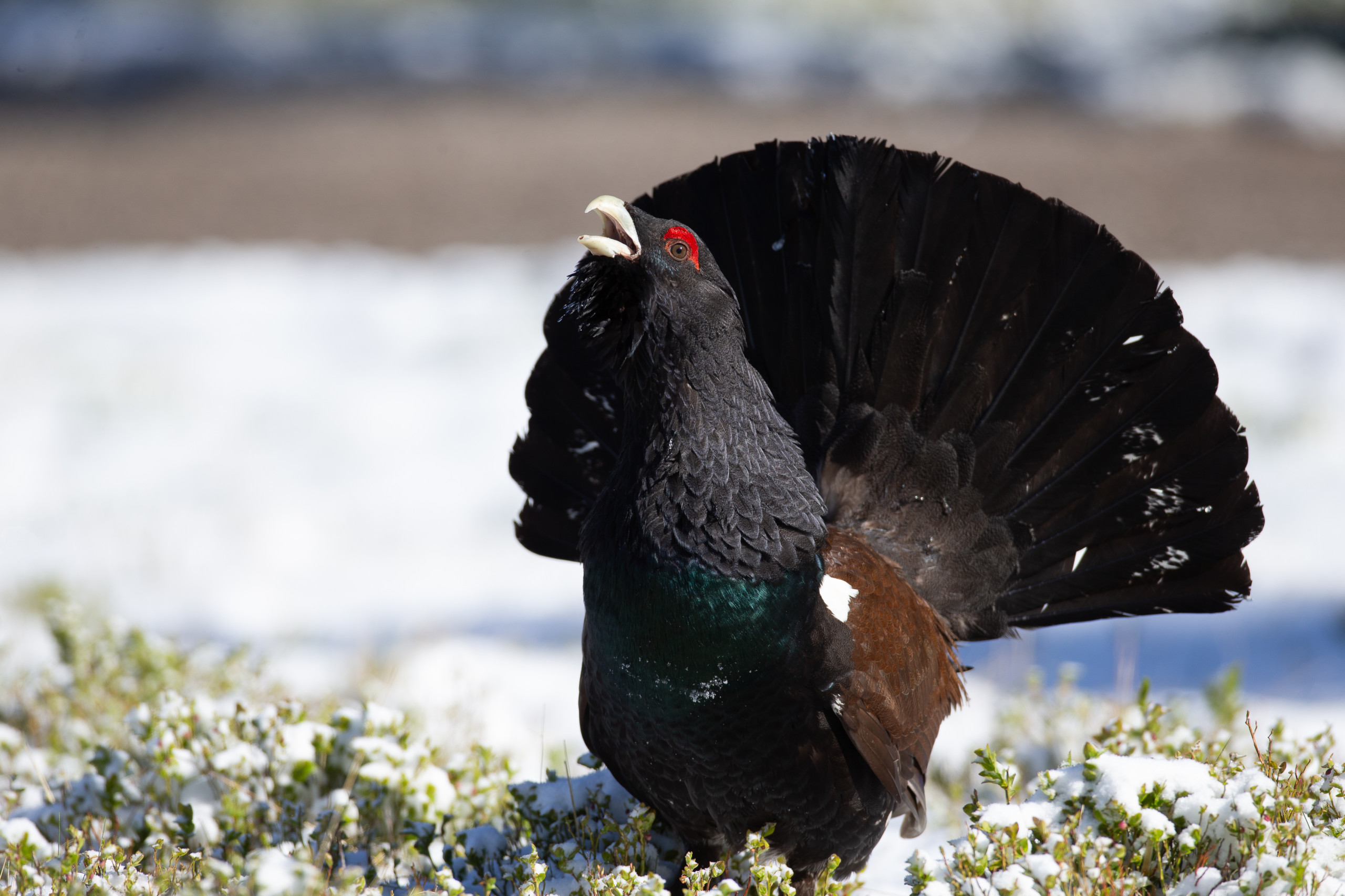
LINKED PAPER
Weather conditions explain reproductive success and advancement of the breeding season in Western Capercaillie (Tetrao urogallus). Coppes, J., Kämmerle, J. L., Schroth, K. E., Braunisch, V., & Suchant, R. 2021. IBIS. DOI: 10.1111/ibi.12924. VIEW
The early bird catches the worm. But what if the worm already disappeared before the early bird arrives? This situation is becoming more common due to changes in climatic conditions. In certain regions, the earlier onset of spring results in a mismatch between the peak in food availability and the reproductive cycle of birds (Visser et al. 2004). During the breeding season, parents might not be able to provide enough food for their chicks, leading to a significant decrease in reproductive output (Carey 2009). This phenomenon – known as a phenological mismatch – could be affecting an already vulnerable species: the Western Capercaillie (Tetrao urogallus). Apart from land use changes and increased predation pressure, this species might also have to cope with climate change (Moss et al. 2001).
Lekking
A team of ornithologists monitored the reproductive cycle of the Western Capercaillie in the southwest of Germany. These birds use a lekking mating system where males gather in one location to engage in courtship displays. The researchers determined the peak of reproductive activity by counting the number female birds at these lekking sites. Using data from a 14-year period, it turned out that the peak of lekking activity advanced by about half a day per year. This temporal shift might be linked to the phenology of the local vegetation and the emergence of moth caterpillars, an important food source for this bird species (Baines et al. 2016). It thus seems that Western Capercaillie are able to adjust their behaviour to changing climatic conditions.

Figure 1. The peak in lekking activity is earlier each year (bottom dashed line in figure a), following the phenology of the local vegetation, such as the blossoming of apple trees (upper dotted line). The small plots show the associated weather conditions – (b) temperature and (c) precipitation during the breeding season.
Weather patterns
Apart from food availability, the earlier onset of lekking activities might also be related to changing weather patterns. The researchers note that “Capercaillie might be able to maintain constant weather conditions during the relevant season by adjusting the timing of reproduction.” Specifically, the birds benefit from high spring temperatures with little precipitation. Warmer springs likely lead to higher arthropod availability for feeding the chicks, and thus higher reproductive success. More rainfall, on the other hand, is associated with fewer and smaller broods. Wet and cold conditions probably result in a decline in food availability and lower female body condition (Moss & Watson 1984). By adjusting their lekking behaviour, Western Capercaillies appear to align their reproduction with favourable weather conditions. For the coming years, this strategy might be sustainable. Whether they will be able to cope with future climatic changes remains to be determined.
References
Baines, D., Moss, R. & Dugan, D. (2004). Capercaillie breeding success in relation to forest habitat and predator abundance. Journal of Applied Ecology 41: 59– 71. VIEW
Carey, C. (2009). The impacts of climate change on the annual cycles of birds. Philosophical Transactions of the Royal Society B 364: 3321– 3330. VIEW
Moss, R., Oswald, J. & Baines, D. (2001). Climate change and breeding success: decline of the Capercaillie in Scotland. Journal of Animal Ecology 70: 47– 61. VIEW
Moss, R. & Watson, A. (1984). Maternal nutrition, egg quality and breeding success of Scottish Ptarmigan Lagopus mutus. Ibis 126: 212– 220. VIEW
Visser, M.E., Both, C. & Lambrechts, M.M. (2004). Global climate change leads to mistimed avian reproduction. Advances in Ecological Research 35: 89– 110. VIEW
Image credits
Top right: Western Capercaillie (Tetrao urogallus) | Zwerger-r-leben | CC BY-SA 4.0 Wikimedia Commons
Blog posts express the views of the individual author(s) and not those of the BOU.
If you want to write about your research in #theBOUblog, then please see here




